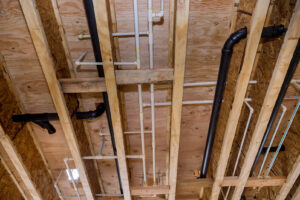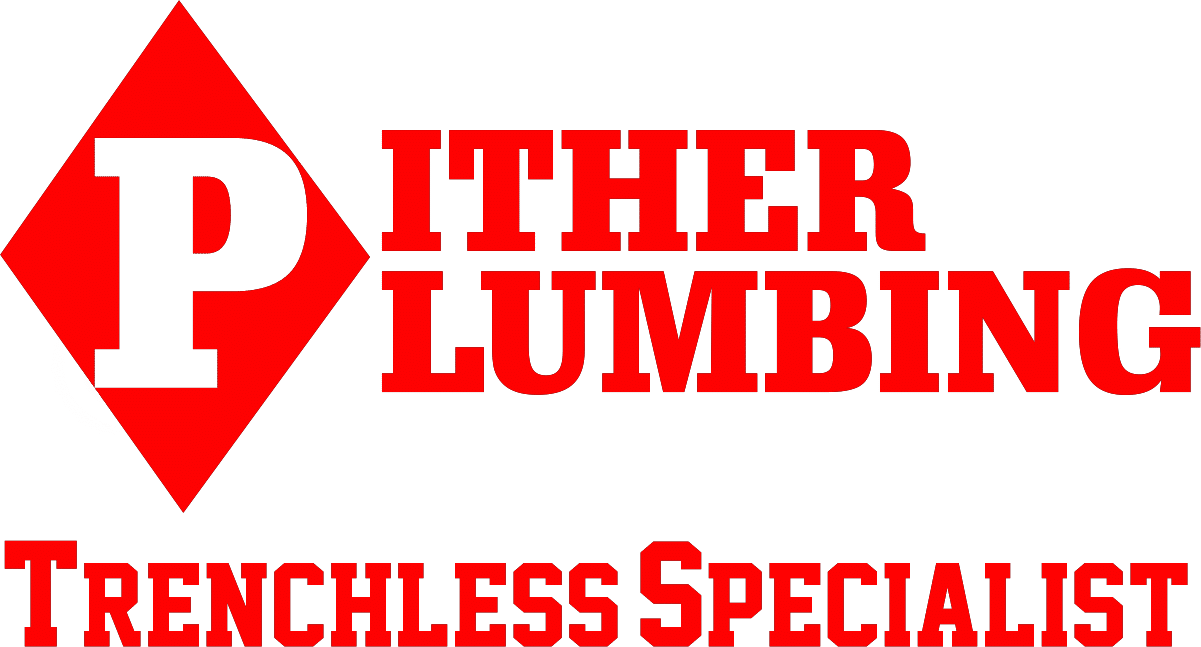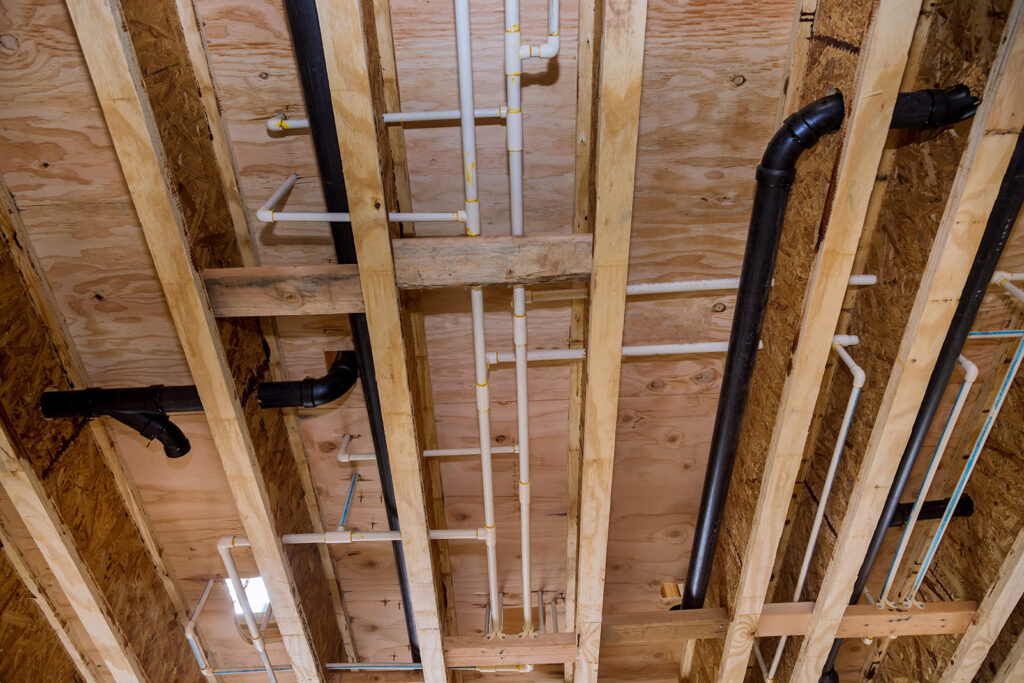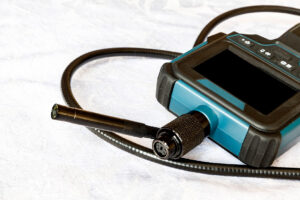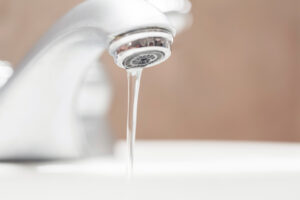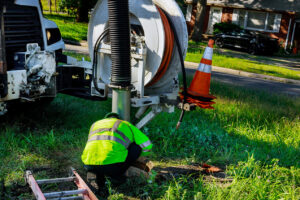Whole house repiping becomes essential when aging or damaged pipes compromise water quality, pressure, safety, and efficiency across an entire property. Homeowners and businesses often overlook subtle indicators—persistent low flow, rust-tinted water, recurrent leaks, pipe noise, obsolete materials, and unexplained bill increases—until a full replacement is the only reliable remedy. In this guide, you will learn how to spot these warning signs, understand the step-by-step repiping process, evaluate material options, weigh long-term benefits and costs, select the ideal piping for residential or commercial settings, and prepare for an upgrade that ensures peak performance and property value.
What Are the Common Signs You Need Whole House Repiping?
Whole house repiping becomes necessary when multiple failure indicators appear simultaneously, signaling that localized repairs will no longer suffice to restore safe, consistent water delivery.
Before diving into individual symptoms, consider this overview of critical warning signs that reflect systemic pipe deterioration:
Sign | Underlying Condition | Visible Impact |
Low Water Pressure | Corrosion or mineral buildup | Weak flow at fixtures |
Discolored or Rusty Water | Iron leaching from steel pipes | Brown, yellow, or orange water tint |
Frequent Leaks and Water Damage | Fractures or joint failures | Stains, mold, rot in walls and floors |
Noisy Pipes (Water Hammer, Rattling) | Loose or deteriorated supports | Loud banging or vibration during flow |
Outdated Materials (Lead/Galvanized) | Health-hazardous pipe alloys | Contaminants, brittle pipe sections |
Increased Water Bills | Hidden leaks or inefficiency | Sudden spike in monthly expenses |
Each symptom typically reflects a failing pipe segment that, when part of a larger pattern, demands complete system replacement rather than spot repairs.
How Does Low Water Pressure Indicate Plumbing Problems?
Low water pressure often signals that pipe walls have narrowed due to corrosion or scale accumulation, which restricts flow rate and undermines system performance. When iron or mineral deposits accumulate within steel or copper lines, the effective diameter decreases and water velocity drops. Homeowners may notice sluggish faucets and weak shower streams, which not only reduce comfort but also strain water-powered appliances. Recognizing chronic pressure loss early can prevent more severe issues like pump failure or total flow interruption.
Why Is Discolored or Rusty Water a Warning Sign?
Discolored water emerges when pipe corrosion releases iron and other metals into your supply, posing both aesthetic and health concerns. As galvanized steel or aging iron pipes degrade internally, rust particulates flake off and mix with flowing water, leading to reddish-brown or yellow tints. Beyond alarming appearance, these contaminants can stain fixtures, clog aerators, and heighten risks of gastrointestinal irritation. Addressing this issue at the source via whole house repiping restores clear, safe drinking water.
What Causes Frequent Leaks and Water Damage in Older Plumbing?
Frequent leaks arise when worn pipe sections develop pinhole fractures or faulty joints, allowing water to escape into structural elements. Fatigue cracks often originate at elbow fittings or soldered joints in aging copper and steel systems, while plastic-joint failure can occur with thermal cycling. Repeated damp patches, peeling paint, and mold growth around walls or ceilings indicate that leaks have progressed beyond minor dripping and threaten wood framing and insulation. Comprehensive repiping halts ongoing damage and eliminates hidden moisture risks.
How Do Noisy Pipes Signal Plumbing Failures?
Loud banging, rattling, or water hammer noises typically result from sudden pressure changes in unsecured or corroded piping. When a valve shuts off abruptly, trapped kinetic energy generates shockwaves that reverberate through loose hangers or weakened wall cavities. Chronic noise may indicate worn support brackets, deteriorated pipe insulation, or internal roughness from corrosion. Replacing compromised pipes with modern materials eliminates these disturbances, delivering quieter, more reliable performance.
Why Are Outdated Pipe Materials Like Lead and Galvanized Pipes Risky?
Lead and galvanized steel pipes pose serious health and property hazards due to their toxicity and corrosion vulnerability. Lead can leach into drinking water, causing neurological and developmental impairments, while galvanized coatings eventually erode, exposing underlying steel to rust and scale. Buildings constructed before the 1980s often contain these materials, creating ongoing contamination and failure risks. Full repiping with non-hazardous alternatives such as PEX or copper safeguards occupant health and infrastructure longevity.
Health Risks of Lead Pipes
Lead pipes pose significant health risks due to the potential for lead to leach into drinking water, causing neurological and developmental impairments. Replacing lead pipes with safer alternatives is essential to protect occupant health and prevent contamination.
World Health Organization, Guidelines for Drinking-water Quality (2017)
This citation reinforces the article’s warning about the dangers of outdated pipe materials like lead.
How Can Increased Water Bills Indicate Hidden Plumbing Problems?
Unexpected rises in water bills often reveal undetected leaks or system inefficiencies that incrementally waste gallons each day. Micro-fractures and joint seepage allow continuous flow without visible signs, driving up consumption and costs. Likewise, corroded pipe interiors force pumps to work harder against pressure losses, increasing energy use. Identifying these hidden drains through a comprehensive inspection and opting for whole house repiping can restore efficiency and reduce utility expenses over the long term.
What Is the Whole House Repiping Process and What Should Homeowners Expect?
Whole house repiping is a systematic service that replaces aging or damaged piping with durable modern materials, ensuring consistent water quality and performance. Homeowners can expect an organized sequence of inspection, planning, installation, regulatory compliance, and final restoration, typically managed by certified plumbing professionals.
- Initial Plumbing Inspection:Certified technicians use camera diagnostics, pressure testing, and flow analysis to map corrosion, blockages, and leak locations.
- Planning and Permitting:Detailed blueprints of new pipe routes are drafted, materials (PEX, copper, CPVC) are selected based on water conditions and budget, and required local permits are secured.
- Repiping Installation:Old piping is removed in sections, new lines are routed through walls and crawlspaces, and fittings are soldered or crimped according to best practices.
- System Testing:Each zone undergoes pressure and leak checks, flushing, and water quality sampling to confirm integrity and compliance with building codes.
- Cleanup and Restoration:Work areas are cleaned, drywall or flooring disruptions are repaired, and fixtures are reinstalled. Technicians conduct a final walkthrough to demonstrate system operation.
Following this structured workflow minimizes disruption and delivers a fully modernized plumbing infrastructure that supports reliable water delivery for years to come.
How Is the Initial Plumbing Inspection Conducted?
The initial inspection combines visual assessment, video pipe scanning, and pressure meter readings to pinpoint deterioration and leak sources. Plumbers systematically trace main supply lines and branch circuits, noting material age, joint integrity, and obstruction levels. This diagnostic phase defines the scope of a repiping project and informs material selection to address site-specific conditions.
How Do You Choose the Best Repiping Material: PEX, Copper, or CPVC?
Selecting PEX, copper, or CPVC involves comparing flexibility, durability, cost, and local water chemistry.
Material | Characteristic | Value |
PEX | Flexibility | Easy installation, fewer joints |
Copper | Longevity | 50+ years lifespan, antimicrobial |
CPVC | Chemical Resistance | Budget-friendly, chlorine tolerant |
Piping Material Lifespan and Performance
The lifespan and performance of piping materials are crucial factors in whole-house repiping. Copper pipes are known for their longevity and antimicrobial properties, making them a reliable choice for hot-water and potable systems. PEX piping offers flexibility and ease of installation, while CPVC provides corrosion resistance and chlorine tolerance.
American Society of Sanitary Engineering, Plumbing Materials and Design (2022)
This research supports the article’s discussion of the advantages and disadvantages of different piping materials.
What Happens During the Repiping Installation?
During installation, old lines are sectioned out and replaced with new piping, routed along the most direct yet accessible paths. Technicians secure pipes with updated supports, solder or crimp connections per manufacturer guidelines, and maintain alignment to avoid stress points. This phase transforms the entire plumbing network into a cohesive, code-compliant system.
How Is Post-Repiping Cleanup and Restoration Managed?
After repiping, all workspaces undergo thorough cleanup, including removal of debris, dust extraction, and sanitization of supply lines. Drywall, flooring, and cabinetry are repaired or refinished to match existing finishes. Final inspections ensure both aesthetic restoration and functional integrity before sign-off.
What Permits and Local Regulations Affect Whole House Repiping?
Whole house repiping requires building permits, electrical permits for relocations near wiring, and compliance with regional plumbing codes (e.g., IPC, UPC). Permit applications include pipe sizing schematics, material specifications, and inspection scheduling to guarantee adherence to health and safety standards.
What Are the Benefits of Whole House Repiping for Your Home or Business?
Whole house repiping delivers cleaner water, improved flow, reduced maintenance, higher property values, and quieter operation by replacing degraded infrastructure with modern, code-approved piping systems.
- Enhanced Water Quality and Safetythrough elimination of corroded pipe contaminants
- Improved Pressure and Flowby restoring full pipe diameter and removing blockages
- Long-Term Cost Savingsvia fewer repairs, lower water bills, and energy efficiency
- Increased Property Valueby upgrading a critical home or commercial asset
- Quieter Plumbing Systemsthrough leak-free joints and shock-absorbing materials
These advantages translate into healthier living environments, reliable water delivery, and financial returns that accrue over decades of service.
How Does Repiping Improve Water Quality and Safety?
Replacing corroded steel or lead pipes with inert materials like PEX or copper removes sources of iron, lead, and scale from drinking water. Modern pipes resist bacterial growth and maintain sanitary conditions, reducing health risks associated with metal leaching or microbial colonization.
In What Ways Does Repiping Enhance Water Pressure and Flow?
New piping restores full internal diameter and smooth interior walls, allowing pumps and municipal pressure to deliver design-rated flow rates. Homeowners notice stronger shower streams, faster faucet fill times, and more consistent performance across multiple fixtures.
How Can Repiping Lead to Long-Term Cost Savings and Fewer Repairs?
By eliminating chronic leak points and corrosion-induced breakdowns, repiped systems require minimal maintenance and avoid emergency repair costs. Reduced water waste lowers utility bills, while energy savings accrue when pumps operate under optimal back-pressure.
How Does New Plumbing Increase Property Value?
A fully replaced plumbing network is a major selling point that reassures buyers about structural integrity and reduces contingencies during home inspections. Appraisers often add value for updated mechanical systems, yielding higher resale prices and faster marketability.
Why Does Repiping Result in Quieter Plumbing Systems?
Modern piping materials absorb pressure surges and dampen resonance, preventing water hammer and rattling noises common in rigid steel installations. Sound-reducing brackets and flexible tubing further ensure whisper-quiet water distribution.
How Much Does Whole House Repiping Cost and What Factors Affect Pricing?
Whole house repiping cost depends on home size, pipe material, labor rates, accessibility, and permit fees; understanding these variables helps in estimating project budgets and exploring financing options.
Factor | Impact | Consideration |
Home Size | Linear feet of pipe required | Larger layouts increase material costs |
Pipe Material | Unit price per foot | Copper > CPVC > PEX |
Labor Complexity | Hours per installation phase | Multi-story vs. single-story layouts |
Accessibility | Ease of access behind walls/floors | Demolition and restoration expenses |
Permit & Inspection | Municipal fees and inspection time | Local jurisdiction rates vary |
Recognizing these cost drivers enables homeowners and businesses to plan budgets accurately and seek competitive proposals.
What Are the Main Factors Influencing Repiping Costs?
Labor intensity and piping material prices typically account for over 70% of total project cost, while structural access and permit requirements add the remainder. Complex routing through finished spaces, multiple fixture tie-ins, and specialized fittings can increase installation time and expenses.
What Is the Average Cost Range for Different Home Sizes and Materials?
A two-bath, single-story home repiping with PEX often ranges from $4,000 to $6,500, while copper repiping may start at $8,000 and climb above $12,000 for larger or multi-story residences. Commercial properties with extensive square footage and industrial-grade piping can run $20,000 or more, depending on system complexity.
Are There Financing Options Available for Repiping Projects?
Many plumbing providers partner with financing firms to offer low-interest loans, payment plans, and home-equity lines of credit tailored to mechanical upgrades. These solutions spread the cost over months or years, making system modernization more attainable without upfront capital.
When Is Repiping Worth the Investment?
Repiping yields strong returns when repeated leaks, consistent water quality issues, or structural water damage threaten living conditions or disrupt operations. Calculating avoided repair costs, utility savings, and increased resale value often justifies the investment within five to seven years.
Cost-Effectiveness of Repiping
Whole house repiping can be a cost-effective investment by eliminating recurring leaks, reducing water bills, and increasing property value. Calculating avoided repair costs, utility savings, and enhanced resale potential often justifies the investment within several years.
National Association of Home Builders, Remodeling Cost vs. Value Report (2024)
This supports the article’s claims about the long-term financial benefits of repiping.
What Are the Best Pipe Materials for Whole House Repiping?
Selecting the right pipe material requires balancing durability, water chemistry compatibility, cost, and installation complexity. PEX, copper, and CPVC dominate residential and commercial repiping for their proven track records and code compliance.
What Are the Advantages and Disadvantages of PEX Piping?
PEX piping offers outstanding flexibility, reducing joints and installation time, while resisting scale and freeze damage. It carries a lower upfront material cost and easily navigates tight spaces. However, PEX can be sensitive to UV exposure and may require specialized fittings, and certain jurisdictions mandate copper in concealed locations.
How Does Copper Piping Compare in Lifespan and Performance?
Copper boasts a 50-plus-year lifespan, natural antimicrobial properties, and high heat tolerance, making it ideal for hot-water and potable systems. Installation demands soldering skills and higher material investment, and water pH extremes can accelerate corrosion in some regions.
What Are the Features of CPVC Piping and Its Ideal Use Cases?
CPVC combines plastic’s corrosion resistance with chlorine tolerance, serving as a budget-friendly alternative for cold and hot water lines. It installs with solvent welding, eliminating flame hazards of soldering. CPVC’s rigidity can complicate long runs and may become brittle over time under UV or extreme temperatures.
Why Should Lead, Galvanized, and Polybutylene Pipes Be Replaced?
These legacy materials present acute risks: lead pipes endanger health through contamination, galvanized pipes suffer rapid interior corrosion, and polybutylene has demonstrated a high failure rate under stress. Converting to approved materials eliminates liability, reduces maintenance, and modernizes the entire plumbing infrastructure.
How Do You Identify and Address Plumbing Issues in Commercial Properties?
Commercial repiping addresses high-volume usage, stringent code requirements, and operational continuity, making early detection and strategic planning crucial for minimal disruption and long-term reliability.
What Are the Signs Commercial Buildings Need Repiping?
Facility managers should watch for pressure inconsistencies across multiple floors, frequent service calls for leaks, brown water complaints in breakrooms or restrooms, and excessive water meter activity. These indicators often point to systemic pipe aging rather than isolated fixture issues.
Which Materials and Regulations Apply to Commercial Repiping?
Industrial and multi-tenant settings commonly specify copper or commercial-grade CPVC for interior distribution, HDPE for underground mains, and steel for high-pressure applications. Compliance with the International Plumbing Code (IPC), ADA accessibility standards, and local health authority mandates governs material selection and installation practices.
How Can Businesses Minimize Disruption During Repiping Projects?
Scheduling phased installations during off-peak hours, isolating zones with temporary feed lines, and coordinating with facility maintenance teams ensures minimal downtime. Clear communication, protective containment barriers, and rapid restoration of finished areas help maintain productivity and tenant satisfaction throughout the upgrade.
What Are the Frequently Asked Questions About Whole House Repiping?
How Long Does Whole House Repiping Usually Take?
Complete repiping for a typical 2,000 sq ft home generally spans 3–5 days, depending on piping complexity, material choice, and inspection scheduling. Multi-story layouts or commercial sites may extend the timeline by one or two days to accommodate safety protocols and multi-zone testing.
Is Whole House Repiping Worth the Cost?
Replacing an entire plumbing network becomes cost-effective when recurring leaks, poor water quality, or structural damage lead to escalating repair bills and health concerns. Calculating avoided maintenance, utility savings, and enhanced resale potential often shows a solid return on investment within several years.
How Can Repiping Integrate with Smart Plumbing Technologies?
Modern repiping can incorporate leak-detection sensors, pressure-monitoring valves, and remote-controlled shut-off units by installing junction boxes and sensor ports alongside new pipes. This future-proofing enables real-time alerts and automated responses that protect properties from catastrophic water events.
What Should Homeowners Do Before and After Repiping?
Before repiping, clear access to cabinets, crawlspaces, and utility rooms, relocate valuables, and review warranty and financing options. After completion, flush all fixtures, inspect aerators, and follow maintenance guidelines provided by your plumbing contractor to maximize system longevity.
How Do You Find a Reliable Plumber for Whole House Repiping?
Look for licensed, insured contractors with specialized repiping experience, transparent written estimates, and positive customer reviews. Verify certifications, ask about material warranties, and confirm adherence to local plumbing codes to ensure professional quality and accountability.
Whole house repiping transforms an aging plumbing system into a modern, efficient network that delivers safe water, reliable pressure, and quiet operation while safeguarding property value. By spotting early warning signs and choosing a structured inspection-to-installation approach with certified professionals, you eliminate recurring issues and enjoy peace of mind for decades.
Investing in quality materials and experienced technicians ensures that your home or business benefits from healthier water, lower repair bills, and a plumbing system built to last. Contact Pither Plumbing today to schedule a comprehensive evaluation and take the first step toward a fully upgraded plumbing infrastructure.
